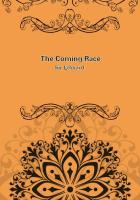This presence of both ***es at a time, even when there are but two cells free, one spacious and the other small, proves in the plainest fashion that the regular distribution observed in the complete nests of recent production is here replaced by an irregular distribution, harmonizing with the number and holding-capacity of the chambers to be stocked. The Mason-bee has before her, let me suppose, only five vacant cells: two larger and three smaller. The total space at her disposal would do for about a third of the laying. Well, in the two large cells, she puts females; in the three small cells, she puts males.
As we find the same sort of thing in all the old nests, we must needs admit that the mother knows the *** of the egg which she is going to lay, because that egg is placed in a cell of the proper capacity. We can go further and admit that the mother alters the order of succession of the ***es at her pleasure, because her layings, between one old nest and another, are broken up into small groups of males and females according to the exigencies of space in the actual nest which she happens to be occupying.
Just now, in the new nest, we saw the Mason-bee arranging her total laying into series first of females and next of males; and here she is, mistress of an old nest of which she has not the power to alter the arrangement, breaking up her laying into sections comprising both ***es just as required by the conditions imposed upon her. She therefore decides the *** of the egg at will, for, without this prerogative, she could not, in the chambers of the nest which she owes to chance, deposit unerringly the *** for which those chambers were originally built; and this happens however small the number of chambers to be filled.
When the nest is new, I think I see a reason why the Mason-bee should seriate her laying into females and then males. Her nest is a half-sphere. That of the Mason-bee of the Shrubs is very nearly a sphere.
Of all shapes, the spherical shape is the strongest. Now these two nests require an exceptional power of resistance. Without protection of any kind, they have to brave the weather, one on its pebble, the other on its bough. Their spherical configuration is therefore very practical.
The nest of the Mason-bee of the Walls consists of a cluster of upright cells backing against one another. For the whole to take a spherical form, the height of the chambers must diminish from the centre of the dome to the circumference. Their elevation is the sine of the meridian arc starting from the plane of the pebble. Therefore, if they are to have any solidity, there must be large cells in the middle and small cells at the edges. And, as the work begins with the central chambers and ends with those on the circumference, the laying of the females, destined for the large cells, must precede that of the males, destined for the small cells. So the females come first and the males at the finish.
This is all very well when the mother herself founds the dwelling, when she lays the first rows of bricks. But, when she is in the presence of an old nest, of which she is quite unable to alter the general arrangement, how is she to make use of the few vacant rooms, the large and the small alike, if the *** of the egg be already irrevocably fixed? She can only do so by abandoning the arrangement in two consecutive rows and accommodating her laying to the varied exigencies of the home. Either she finds it impossible to make an economical use of the old nest, a theory refuted by the evidence, or else she determines at will the *** of the egg which she is about to lay.
The Osmiae themselves will furnish the most conclusive evidence on the latter point. We have seen that these Bees are not generally miners, who themselves dig out the foundation of their cells. They make use of the old structures of others, or else of natural retreats, such as hollow stems, the spirals of empty shells and various hiding-places in walls, clay or wood. Their work is confined to repairs to the house, such as partitions and covers. There are plenty of these retreats; and the insect would always find first-class ones if it thought of going any distance to look for them. But the Osmia is a stay-at-home: she returns to her birth-place and clings to it with a patience extremely difficult to exhaust. It is here, in this little familiar corner, that she prefers to settle her progeny. But then the apartments are few in number and of all shapes and sizes. There are long and short ones, spacious ones and narrow.
Short of expatriating herself, a Spartan course, she has to use them all, from first to last, for she has no choice. Guided by these considerations, I embarked on the experiments which I will now describe.
I have said how my study, on two separate occasions, became a populous hive, in which the Three-horned Osmia built her nests in the various appliances which I had prepared for her. Among these appliances, tubes, either of glass or reed, predominated. There were tubes of all lengths and widths. In the long tubes, entire or almost entire layings, with a series of females followed by a series of males, were deposited. As I have already referred to this result, Iwill not discuss it again. The short tubes were sufficiently varied in length to lodge one or other portion of the total laying. Basing my calculations on the respective lengths of the cocoons of the two ***es, on the thickness of the partitions and the final lid, Ishortened some of these to the exact dimensions required for two cocoons only, of different ***es.
Well, these short tubes, whether of glass or reed, were seized upon as eagerly as the long tubes. Moreover, they yielded this splendid result: their contents, only a part of the total laying, always began with female and ended with male cocoons. This order was invariable;what varied was the number of cells in the long tubes and the proportion between the two sorts of cocoons, sometimes males predominating and sometimes females.















